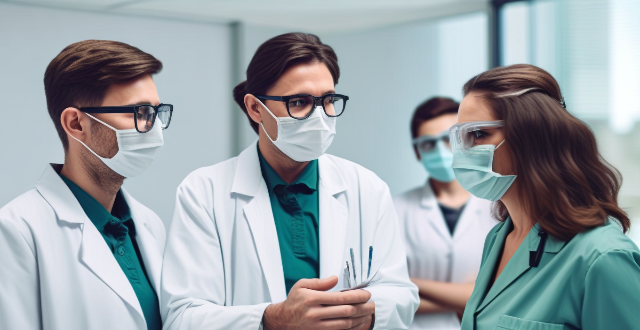PPE is vital for maintaining biosafety by preventing exposure to harmful biological agents, reducing contamination, complying with regulations, and promoting safety awareness. Types of PPE include physical barriers like gloves and gowns, eye and face protection, respiratory protection, and head protection. Best practices involve ensuring proper fit, following correct donning and doffing procedures, replacing damaged or contaminated PPE, storing it properly, and regularly inspecting it for wear or damage.

The Role of Personal Protective Equipment (PPE) in Maintaining Biosafety
Personal Protective Equipment (PPE) plays a crucial role in maintaining biosafety. Biosafety refers to the practices and procedures used to protect workers, researchers, and the public from exposure to potentially harmful biological agents. PPE is designed to protect individuals from these agents by providing a barrier between them and their skin, eyes, or respiratory system.
Importance of PPE in Biosafety
Prevention of Exposure
- Skin Protection: Gloves, gowns, and other protective clothing prevent direct contact with contaminants.
- Eye Protection: Goggles or face shields prevent splashes or sprays from reaching the eyes.
- Respiratory Protection: Masks, respirators, or breathing apparatuses filter out airborne particles and prevent inhalation of harmful substances.
Reduction of Contamination
- Containment: Proper use of PPE helps maintain sterile environments and prevents cross-contamination.
- Disposal: Disposable PPE is designed for single use and should be disposed of properly to avoid spreading contaminants.
Compliance with Regulations
- Legal Requirements: Many jurisdictions have regulations that mandate the use of specific types of PPE in certain situations.
- Standardization: PPE often meets international standards (e.g., ISO), ensuring quality and effectiveness.
Training and Awareness
- Education: Workers must be trained on how to properly wear, remove, and dispose of PPE to maximize its effectiveness.
- Awareness: Understanding the importance of PPE fosters a culture of safety and compliance.
Types of PPE Used in Biosafety
Physical Barriers
- Gloves: Made from materials like latex, nitrile, or vinyl to protect hands.
- Gowns/Aprons: Worn to cover clothing and prevent contamination.
- Shoe Covers: Protect feet and prevent tracking contaminants.
Eye and Face Protection
- Safety Goggles: Protect against splashes and sprays.
- Face Shields: Provide additional protection for the entire face.
Respiratory Protection
- Surgical Masks: Loose-fitting, disposable masks that protect against large particles.
- Respirators: Tight-fitting masks that filter out smaller particles; may require fit testing.
Head Protection
- Hair Coverings: Prevent hair from coming into contact with contaminants.
- Hats/Booties: Sometimes used in more stringent environments to cover shoes and heads.
Best Practices for Using PPE
1. Proper Fit: Ensure that all PPE fits correctly for maximum protection.
2. Donning and Doffing: Follow correct procedures for putting on and taking off PPE to avoid self-contamination.
3. Replacement: Replace PPE immediately if it becomes damaged or contaminated.
4. Storage: Store PPE in a clean, dry place to prevent damage or contamination before use.
5. Regular Inspection: Regularly inspect PPE for signs of wear or damage.
In conclusion, Personal Protective Equipment is an essential component of any biosafety program. It serves as the first line of defense against biological hazards and should be used in conjunction with other biosafety measures to ensure the highest level of protection for all individuals working with or around potentially harmful substances.